- Home
- H. P. Lovecraft
The Horror in the Museum
The Horror in the Museum Read online
The H. P. Lovecraft editions
from Del Rey Books
The Best of H. P. Lovecraft:
BLOODCURDLING TALES OF HORROR
AND THE MACABRE
The Dream Cycle of H. P. Lovecraft:
DREAMS OF TERROR AND DEATH
The Transition of H. P. Lovecraft:
THE ROAD TO MADNESS
THE HORROR IN THE MUSEUM
THE WATCHERS OUT OF TIME (forthcoming)
WAKING UP SCREAMING
SHADOWS OF DEATH
Other stories in the H. P. Lovecraftian World
H. P. Lovecraft and Others:
TALES OF THE CTHULHU MYTHOS
Stories Inspired by H. P. Lovecraft: CTHULHU 2000
Also available from The Modern Library
AT THE MOUNTAINS OF MADNESS
The Definitive Edition
Contents
INTRODUCTION by Stephen Jones
A NOTE ON THE TEXTS by S. T. Joshi
LOVECRAFT’S “REVISIONS” by August Derleth
PRIMARY REVISIONS
THE GREEN MEADOW (1918/19)
THE CRAWLING CHAOS (1920/21)
THE LAST TEST (1927)
THE ELECTRIC EXECUTIONER (1929)
THE CURSE OF YIG (1928)
THE MOUND (1929-30)
MEDUSA’S COIL (1930)
THE MAN OF STONE (1932)
THE HORROR IN THE MUSEUM (1932)
WINGED DEATH (1932)
OUT OF THE AEONS (1933)
THE HORROR IN THE BURYING-GROUND (1933/35)
THE DIARY OF ALONZO TYPER (1935)
SECONDARY REVISIONS
THE HORROR AT MARTIN’S BEACH (1922)
ASHES (1923)
THE GHOST-EATER (1923)
THE LOVED DEAD (1923)
DEAF, DUMB, AND BLIND (1924)
TWO BLACK BOTTLES (1926)
THE TRAP (1931)
THE TREE ON THE HILL (1934)
THE DISINTERMENT (1935)
“TILL A’ THE SEAS” (1935)
THE NIGHT OCEAN (1936)
H. P. LOVECRAFT: A BIOGRAPHICAL NOTE
Introduction
Howard Phillips Lovecraft certainly could write. And the many books and stories bearing his byline are ample proof of that.
In a world filled with pastiches, spoofs, and sequels (trust me, I know—I’ve edited a couple of those volumes myself), Lovecraft is the real thing.
Although it has become fashionable by some contemporary critics to decry the author’s somewhat archaic and eldritch writing style, there is no doubt that Lovecraft knew exactly what he was doing, and like Edgar Allan Poe—who he both admired and now rivals in influence—he was an American stylist of the highest order.
My own introduction to Lovecraft’s work occurred in 1969 when, at the age of sixteen, I came across a paperback edition of Dagon and Other Macabre Tales in a local Woolworth’s branch. I was initially attracted to the book by the distinctive black-and-white illustration on the cover, but the stories it contained were a revelation to me.
Within a year I had tracked down and read every major story Lovecraft had ever written. And despite having collected the author’s work in many rare and original editions over the years, I still have the very same copy of that first paperback on my shelf, almost forty years later.
However, once I had exhausted Lovecraft’s relatively small body of work, I started searching around for other stories in a similar vein.
***
Born in his grandparents’ house in Providence, Rhode Island, on August 20, 1890, H. P. Lovecraft led a somewhat sheltered life as a child. Because of an apparent nervous disorder, he was treated as a semi-invalid by his protective mother and her indulgent family, and this coddled seclusion allowed the young boy to read a great many books.
A lifelong Anglophile as a result of his family’s paternal English ancestry, Lovecraft had an old-fashioned writing style that may not have appealed to many contemporary readers, and he was easily discouraged when things did not go his way. Yet, despite all of these tribulations, his work has survived and flourished in the seventy years since his premature death.
This is because Lovecraft had an imagination second-to-none. Most famously, he created a pantheon of ancient Gods and alien deities in a series of loosely connected stories that later came to be called the “Cthulhu Mythos.”
Even during his lifetime, Lovecraft’s concepts were added to by an ever-widening circle of writers. It has been argued that Lovecraft did not actively encourage these pastiches, although at first they were mostly written by his friends, correspondents, and fellow writers from the legendary pulp magazine Weird Tales. These, most notably, included August W. Derleth, Robert E. Howard, Robert Bloch, Clark Ashton Smith, and Frank Belknap Long.
It was also Lovecraft’s habit to adopt the inventions of his friends—such as the names of demonic divinities and cursed tomes of eldritch lore—and give them his seal of approval by incorporating them into his own fiction.
However, there also exists a converse group of stories that exhibit a much more personal involvement by the author, even if his name invariably did not appear on the originally published byline.
Despite his devotion to the actual craft of writing, Lovecraft’s attitude to his own work often bordered on the dismissive, if not downright lazy. Although he made a meager living as a commercial writer, he rarely considered markets. He was as likely to have his work published in an amateur press publication for little or no reward as he was to see his name on the cover of a newsstand pulp magazine that invariably still only paid its contributors a pittance.
In his early twenties Lovecraft became immersed with the amateur journalism movement. He was also an inveterate letter writer, churning out an average of eight to ten letters a day, each usually four to eight pages in length, to a wide circle of correspondents, when he should have been producing more fiction.
Much of Lovecraft’s writing was done in longhand with a fountain pen, and he hated revising or retyping his work (to the extent that others would sometimes do it for him). If a particular story was rejected by a specific market he had submitted it to, Lovecraft would more likely become despondent than try to sell the tale elsewhere: “Rejections are so numerous lately that I think I’ll stop writing for a while & use the time in revision,” he wrote to correspondent August Derleth.
As an author he wrote what he wanted, and when that did not pay the bills, he turned to rewriting other people’s stories—often so extensively that they became wholly his own work.
This was the case with “The Crawling Chaos,” an early dream-narrative written with the amateur poet Winifred Virginia Jackson and published under the double pseudonyms Lewis Theobold, Jr., and Elizabeth Neville Berkley in The United Co-operative, an amateur magazine.
With money always tight, and as a method of subsidizing his precarious income, Lovecraft provided a literary revision service, giving advice and suggestions where needed, or completely changing the work of some of his less talented clients. In fact, these (usually uncredited) revisions became Lovecraft’s major source of income, with his own fiction merely a sideline. Although much of this work consisted of correcting spelling, punctuation and grammar, or copying out manuscript pages, he would sometimes entirely revise and rewrite a story, retaining only its title or the nucleus of the plot if its content inspired his imagination.
Among the amateur authors whose work he substantially rewrote or revised were U.S. consul Adolphe de Castro; family friend and fellow Providence resident C. M. Eddy, Jr.; Lovecraft’s future literary executor Robert H. Barlow; writer and editor Wilfred Blanch Talman; midwest journalist and romance writer Zealia B. Bishop; Massachusetts divorcee Hazel Heald; world traveler Wil
liam Lumley; Lovecraft’s future wife Sonia H. Greene (Davis); and even the famous magician and escape artist Harry Houdini (Ehrich Weiss), all of whom went on to sell their fiction to Weird Tales.
“He would criticize paragraph after paragraph and pencil remarks beside them,” recalled Hazel Heald, “and then make me rewrite them until they pleased him.”
It was also through this service that Lovecraft added stories by such writers as Bishop, Heald, Lumley, and Frank Belknap Long to the burgeoning “Cthulhu Mythos.”
“The stories I sent him always came back so revised from their basic idea that I felt I was a complete failure as a writer,” Zealia Bishop remembered. “As a writer and instructor in the field of supernatural fiction he was an undisputed master, and another’s work seldom pleased him when he first saw it. He could always find much to improve, and he was generous with his advice, drawing on a vast store of knowledge quite beyond the capacity of the average man of education of his or our time.”
Bishop felt so grateful to Lovecraft that when her story “Medusa’s Coil” ultimately appeared in the January 1939 issue of Weird Tales, she stipulated that half the fee ($120) should be paid to his surviving aunt, Annie E. P. Gamwell. “My debt to Lovecraft is great,” Bishop admitted. “I count myself fortunate that I was one of his epistolary friends and pupils.”
The Horror in the Museum contains some of the best of these “revisions” or, as they should more properly be called, “collaborations.” If not quite up to the standard of Lovecraft’s own finest work, such tales as C. M. Eddy’s controversial “The Loved Dead,” Robert H. Barlow’s “Till A’ the Seas,” Hazel Heald’s “Out of the Aeons” and “The Horror in the Burying-Ground,” William Lumley’s “The Diary of Alonzo Typer,” and Zealia Bishop’s “The Curse of Yig,” “Medusa’s Coil,” and the short novel “The Mound,” along with the title story itself, are all worthy of being considered minor gems in the canon of weird fiction. This is not really so surprising when you recognize that, as August Derleth so succinctly pointed out, “Lovecraft wrote most of what is memorable in them!”
But for me, the greatest thrill of buying this book when I was still a teenager was discovering that I shared my name (and its particular spelling) with the doomed protagonist of the Lovecraft-Hazel Heald collaboration “The Horror in the Museum.” Not only that, but the story is atypically set in London—just across the River Thames from where I was born!
Reading this tale, I have never felt closer to the writer whose work helped shaped my own career in the field of macabre fiction.
***
Howard Phillips Lovecraft died on the morning of March 15, 1937, at the ridiculously young age of forty-six. He was buried in the family plot in the Swan Point Cemetery, where his name was inscribed alongside those of his parents. Just four people attended his funeral.
In the intervening years, all of Lovecraft’s stories have been kept in print, not least through Del Rey’s continuing series of attractive compilations. His work continues to sell millions of copies throughout the world and have been translated into every major language. Anthology editors such as myself continue to draw upon his relatively small cadre of fiction, and there are numerous websites and chat rooms devoted to the man and his work on the Internet.
Perhaps even more important, his stories and concepts have continued to inspire new generations of authors, many of whom have gone on to forge major careers in the weird fiction field.
But when it comes right down to it, there is only one H. P. Lovecraft. Although his style and themes have been copied, expanded, and adapted by countless others, he is genuinely unique among writers of supernatural fiction.
So don’t be fooled by the bylines on these stories. For the most part, these are the real thing. The source of the nightmares. The ground zero of horror. Yes, H. P. Lovecraft certainly could write, no matter where the original concept came from or who received the final credit … as this book so aptly proves.
STEPHEN JONES
London, England
February 2007
STEPHEN JONES is one of Britain’s most acclaimed anthologists of horror and dark fantasy. He has more than eighty-five books to his credit, including H. P. Lovecraft’s Book of Horror, H. P. Lovecraft‘s Book of the Supernatural, Shadows Over Innsmouth, and Weird Shadows Over Innsmouth. You can visit his website at www.herebedragons.co.uk/jones.
A Note on the Texts
In this corrected edition of H. P. Lovecraft’s revisions and collaborations, we have attempted not merely to restore the texts but to arrange the tales in accordance with the presumed degree of Lovecraft’s involvement with them. What we have called “primary” revisions are those that were wholly or almost wholly written by Lovecraft (although a plot-germ or occasionally an actual draft was supplied by the revision client); the “secondary” revisions are those in which Lovecraft merely touched up—albeit sometimes extensively—a preexisting draft.
The two collaborations with Winifred Virginia Jackson, “The Green Meadow” and “The Crawling Chaos,” are interesting in that they are among the few works (the others are “Poetry and the Gods,” “Through the Gates of the Silver Key,” and “In the Walls of Eryx”) where Lovecraft affixed his name along with that of his collaborator, even though here both used pseudonyms. Nevertheless, there is little evidence to suggest that Jackson contributed any prose to either tale.
For the two tales revised for Adolphe de Castro, “The Last Test” and “The Electric Executioner,” we have de Castro’s original versions: they were published in his collection In’the Confessional (1893), under the titles “A Sacrifice to Science” and “The Automatic Executioner.” Lovecraft has rewritten both stories completely, preserving only the skeleton of each work. It should be noted that in Lovecraft’s only reference to the first tale he calls it “Clarendon’s Last Test”; it is not certain whether he or someone else made the change. Lovecraft also speaks in letters of a third story revised for de Castro, but this has evidently been lost.
All three stories revised for Zealia Bishop—”The Curse of Yig,” “The Mound,” and “Medusa’s Coil”—were, as Lovecraft notes, based on the scantiest of plot-germs and are accordingly close to original works by Lovecraft. The persistent rumor that Frank Belknap Long assisted in the writing of “The Mound” is false: Long, as Zealia Bishop’s agent, merely abridged the story in a vain attempt to place it with a pulp magazine; after these efforts failed, the original version of the story as written by Lovecraft was restored, remaining in manuscript until Lovecraft’s death. August Derleth then radically revised and abridged both “The Mound” and “Medusa’s Coil” and marketed them to Weird Tales. This edition represents the first unadulterated publication of both works.
There is abundant evidence that Lovecraft wrote nearly the entirety of all five stories revised for Hazel Heald; Heald’s contention that Lovecraft’s role in “The Man of Stone” was somewhat less extensive than in the others does not seem to be borne out by the text.
For “The Diary of Alonzo Typer” we have both a draft by William Lumley (the title is his) and Lovecraft’s rewriting. Again Lovecraft has preserved only the nucleus of the plot, and all the prose is his. Lumley’s draft was first published (along with the original versions of the two Adolphe de Castro tales) in a special edition of Crypt of Cthulhu, Ashes and Others (1982).
Of the secondary revisions, Sonia H. Greene (Davis) reports that Lovecraft “revised and edited” “The Horror at Martin’s Beach” (the title “The Invisible Monster” was supplied by Weird Tales), hence we can assume a preexisting draft. The other tale by Greene thought to be revised by Lovecraft, “Four O’Clock,” was written, as Greene tells us, only at Lovecraft’s suggestion and does not seem to bear any Lovecraftian prose or content; it has accordingly been omitted from this edition.
In recent years Lovecraft’s revisory hand has been detected in a number of tales by his friends and colleagues, and five stories have been added to this edition. Kenneth W. Faig, Jr., firs
t observed that Lovecraft in letters refers to four tales revised for C. M. Eddy, Jr.; all were probably based on existing drafts by Eddy, who wrote many tales in his own right. “Ashes” appears to be the earliest of these stories, and Lovecraft’s hand in it is probably very light. In the other three—”The Ghost-Eater,” “The Loved Dead,” and “Deaf, Dumb, and Blind”—the two authors probably contributed equally.
It is difficult to ascertain how much of Lovecraft remains in Wilfred Blanch Talman’s “Two Black Bottles,” as Lovecraft’s letters suggest that Talman was annoyed at Lovecraft’s extensive revisions in the story and may perhaps have reinstated his own prose in the final draft.
I discovered Lovecraft’s role in Henry S. Whitehead’s “The Trap”; in a letter to R. H. Barlow (25 February 1932) he reports writing the entire central section of the story. In letters Lovecraft refers to another story by Whitehead, “The Bruise,” for which he supplied a synopsis; and although William Fulwiler, who brought this matter to our attention, believes that Lovecraft may have actually written the story (published as “Bothon” in West India Lights), I am not convinced that Lovecraft contributed any prose to this work.
Lovecraft’s letters to Duane W. Rimel indicate that he was reading and reviewing many of Rimel’s tales during the 1930s, and in two of them he seems to have had a hand. Scott Connors noted Lovecraft’s involvement in “The Tree on the Hill,” and Robert M. Price and I confirmed it. Rimel has stated that Lovecraft wrote the entire third section of the tale, as well as the citation from the mythical Chronicle of Nath in the second section. Will Murray first suspected, on internal evidence, Lovecraft’s role in “The Disinterment.” Rimel maintains that Lovecraft’s revisions in the story were very light, and letters by Lovecraft unearthed by Murray and myself appear to confirm that claim.
For R. H. Barlow’s “Till A’ the Seas’“ we have a typescript by Barlow (apparently a second draft) with exhaustive revisions by Lovecraft in pen. Dirk W. Mosig discovered Lovecraft’s hand in Barlow’s “The Night Ocean,” as cited in a letter to Hyman Bradofsky (4 November 1936). Mosig believed the tale to be nearly entirely written by Lovecraft; but documents subsequently consulted by me suggest that he played a much smaller role in the genesis and writing of the tale. The work was probably largely Barlow’s, although with heavy revisions and additions by Lovecraft at random points.

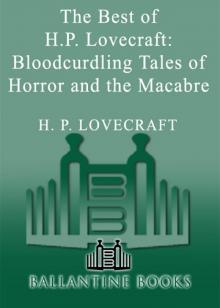 The Best of H.P. Lovecraft
The Best of H.P. Lovecraft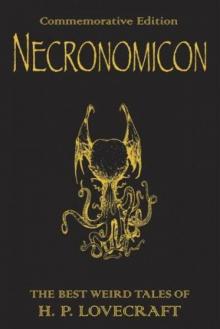 The Definitive H.P. Lovecraft: 67 Tales Of Horror In One Volume
The Definitive H.P. Lovecraft: 67 Tales Of Horror In One Volume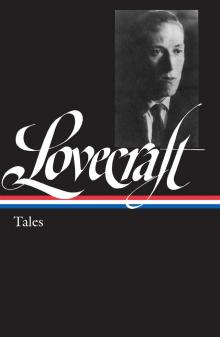 The Complete Works of H.P. Lovecraft
The Complete Works of H.P. Lovecraft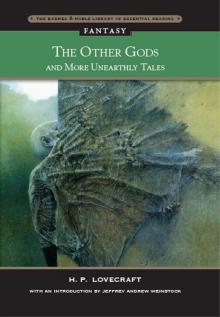 Other Gods and More Unearthly Tales
Other Gods and More Unearthly Tales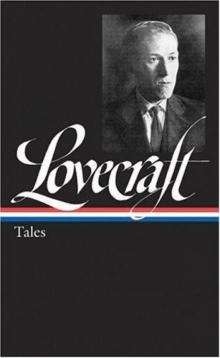 Lovecraft's Fiction Volume I, 1905-1925
Lovecraft's Fiction Volume I, 1905-1925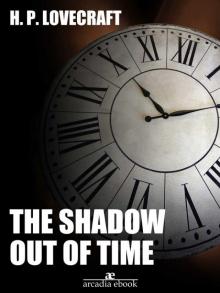 The Shadow Out of Time
The Shadow Out of Time The Shunned House
The Shunned House Lovecraft's Fiction Volume II, 1926-1928
Lovecraft's Fiction Volume II, 1926-1928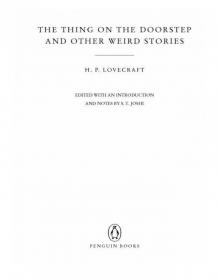 The Thing on the Doorstep and Other Weird Stories
The Thing on the Doorstep and Other Weird Stories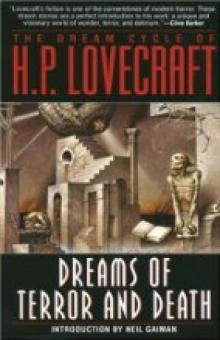 Dream Cycle of H. P. Lovecraft: Dreams of Terror and Death
Dream Cycle of H. P. Lovecraft: Dreams of Terror and Death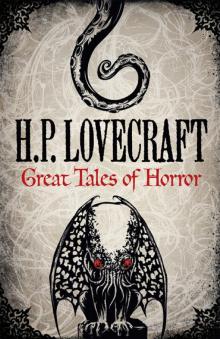 Great Tales of Horror
Great Tales of Horror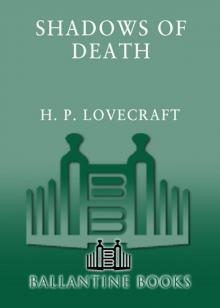 Shadows of Death
Shadows of Death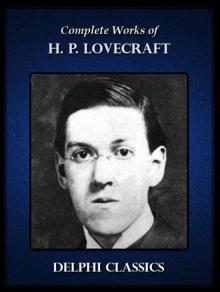 Delphi Complete Works of H. P. Lovecraft (Illustrated)
Delphi Complete Works of H. P. Lovecraft (Illustrated)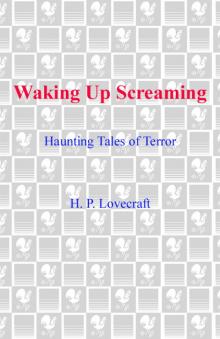 Waking Up Screaming: Haunting Tales of Terror
Waking Up Screaming: Haunting Tales of Terror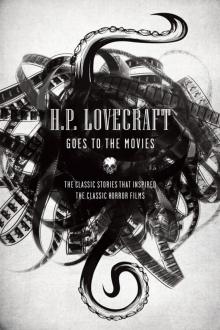 H.P. Lovecraft Goes to the Movies
H.P. Lovecraft Goes to the Movies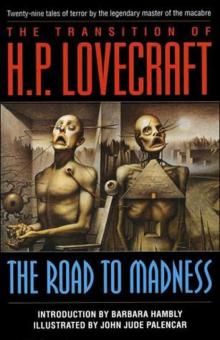 The Road to Madness
The Road to Madness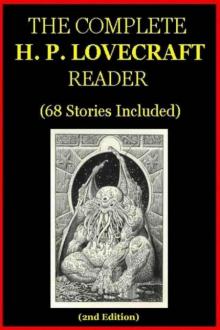 The Complete H.P. Lovecraft Reader (68 Stories)
The Complete H.P. Lovecraft Reader (68 Stories)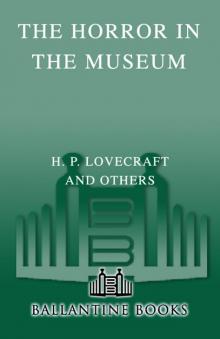 The Horror in the Museum
The Horror in the Museum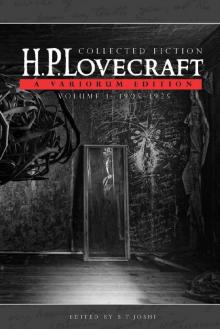 Collected Fiction Volume 1 (1905-1925): A Variorum Edition
Collected Fiction Volume 1 (1905-1925): A Variorum Edition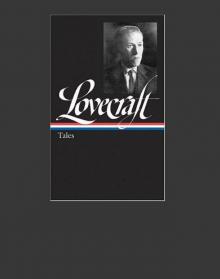 Lovecrafts_Fiction, vol.I_1905-1925
Lovecrafts_Fiction, vol.I_1905-1925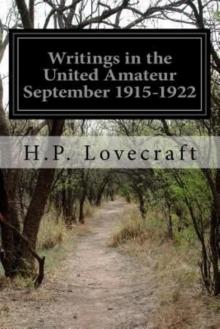 Writings in the United Amateur, 1915-1922
Writings in the United Amateur, 1915-1922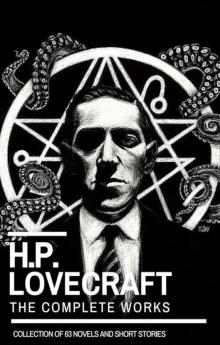 H.P. Lovecraft: The Complete Works
H.P. Lovecraft: The Complete Works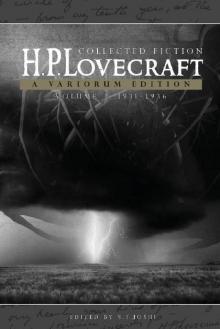 Collected Fiction Volume 3 (1931-1936): A Variorum Edition
Collected Fiction Volume 3 (1931-1936): A Variorum Edition H.P. Lovecraft: The Complete Fiction
H.P. Lovecraft: The Complete Fiction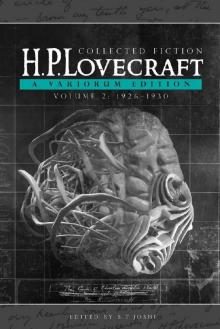 Collected Fiction Volume 2 (1926-1930): A Variorum Edition
Collected Fiction Volume 2 (1926-1930): A Variorum Edition Yog Sothothery - The Definitive H.P. Lovecraft Anthology
Yog Sothothery - The Definitive H.P. Lovecraft Anthology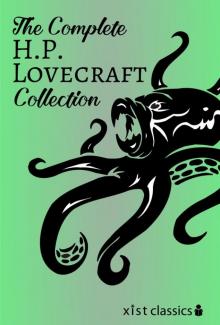 The Complete H.P. Lovecraft Collection (Xist Classics)
The Complete H.P. Lovecraft Collection (Xist Classics)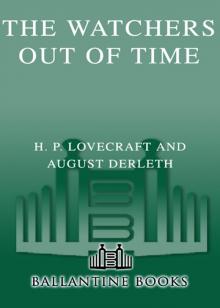 The Watchers Out of Time
The Watchers Out of Time Eldritch Tales
Eldritch Tales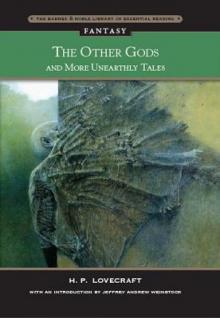 The Other Gods And More Unearthly Tales
The Other Gods And More Unearthly Tales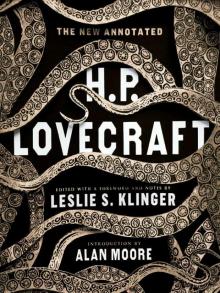 The New Annotated H. P. Lovecraft
The New Annotated H. P. Lovecraft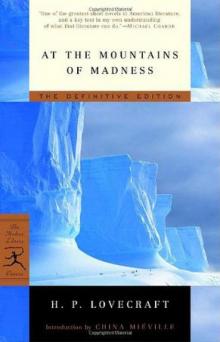 At the mountains of madness
At the mountains of madness Bloodcurdling Tales of Horror and the Macabre
Bloodcurdling Tales of Horror and the Macabre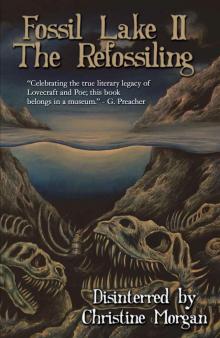 Fossil Lake II: The Refossiling
Fossil Lake II: The Refossiling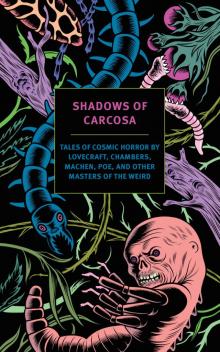 Shadows of Carcosa: Tales of Cosmic Horror by Lovecraft, Chambers, Machen, Poe, and Other Masters of the Weird
Shadows of Carcosa: Tales of Cosmic Horror by Lovecraft, Chambers, Machen, Poe, and Other Masters of the Weird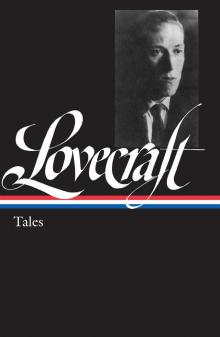 H. P. Lovecraft
H. P. Lovecraft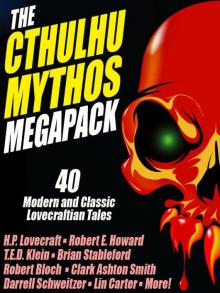 The Cthulhu Mythos Megapack
The Cthulhu Mythos Megapack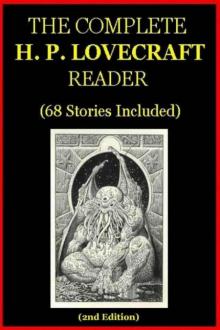 The Complete H. P. Lovecraft Reader (2nd Edition)
The Complete H. P. Lovecraft Reader (2nd Edition)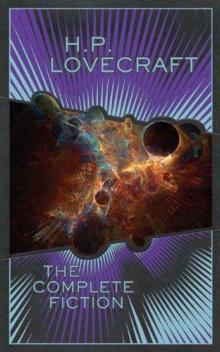 The Complete Fiction
The Complete Fiction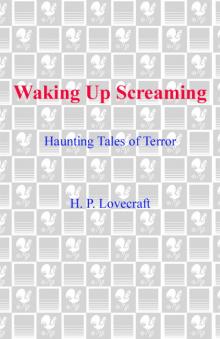 Waking Up Screaming
Waking Up Screaming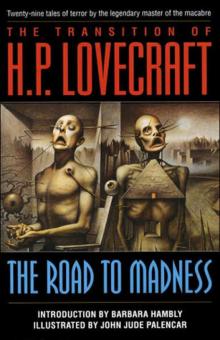 Transition of H. P. Lovecraft
Transition of H. P. Lovecraft![[1935] The Shadow Out of Time Read online](http://i1.bookreadfree.com/i2/04/12/1935_the_shadow_out_of_time_preview.jpg) [1935] The Shadow Out of Time
[1935] The Shadow Out of Time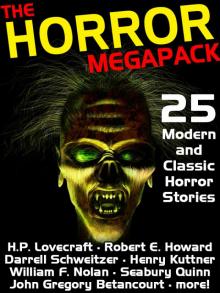 The Horror Megapack
The Horror Megapack